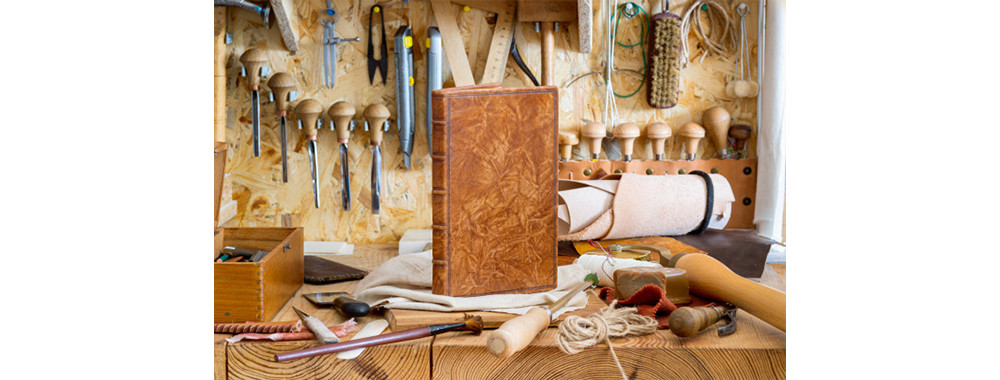
Traditional Book Binding of Ardabil
The art of making covers is one of the most important fields of the art of bookbinding in the Iranian-Islamic culture. For Iranians, books have been of great importance and were highly regarded from ancient times. That is why they have used every possible way to beautifully decorate and protect them. Since in the past the books were manuscripts and handwritten by great scholars, or were holy Quran which are revelations from God, binding of their pages were done with high exactness and delicacy. A beautiful and exquisite cover represented the high value of text of the book and encouraged and excited the reader. The artist binders did limit themselves only to high-quality leather covers, but they elevated their art to decorate these books. There is a book in the British Museum that, according to the specialists of the museum, about half a million hand-drawn separated painting has been drawn on its cover. During the rule of Shah Rukh of Timurid, the art of making book covers flourished, especially in Herat. Iranian book covers from this era exceeded the European products from Medieval. During the rule of Naser al-Din Shah of Qajar, oil method or “Laki” (lacquered cover) became a very common method of bookbinding and by his order, the “Majma ol Sanaye” institute was established in Tehran. According to the historians, many covers were found from the private library and have been moved to the royal library later. Among the book covers of the Naser al-Din Shah, there are pieces of leather or fabric, mostly velvet, which have been created using foreign methods. The covers can be divided based on the method of their manufacturing. Each method has gradually improved in time. The covers can be divided into five general groups of “Sukht”, “Zarbi”, “Laki”, “Moji”, and “Zarkub”.
To make a Zarbi cover, first the design is applied on the leather, then they are beaten by metals which makes them embossed. For Sukht covers, after the design is drawn on the leather, a heated metal bearing the same design is then put on the leather, and by further pushing it, the design is burned and embossed. To create a lacquered cover, first a layer of clear oil is applied on cardboard, then it is oil painted, and finally coated with a layer of lac (similar to papier-mâché). Moji covers are created by applying a mixture of tin and animal glue and its polishing by grindstone after it dried. In Zarkub method, the designs are first drawn on the background and also turned into printing clichés. Then the design is applied on the cover by pressing the gold paper using the clichés. This valuable craft is still practiced in Ardabil.